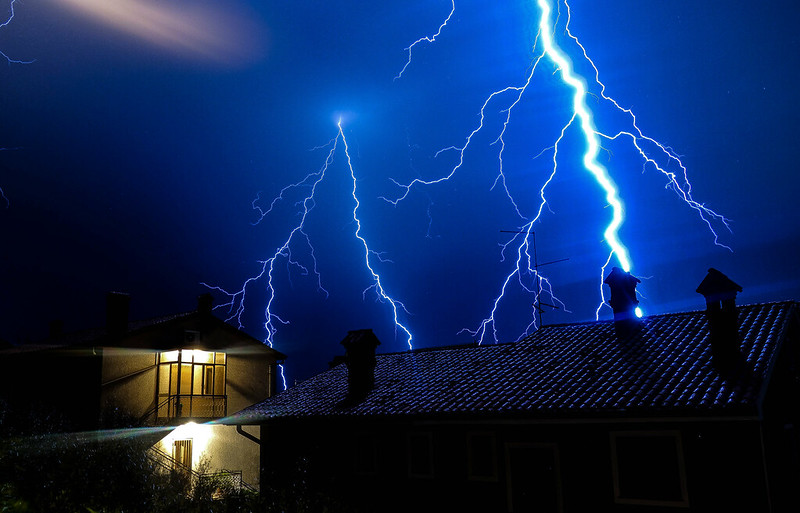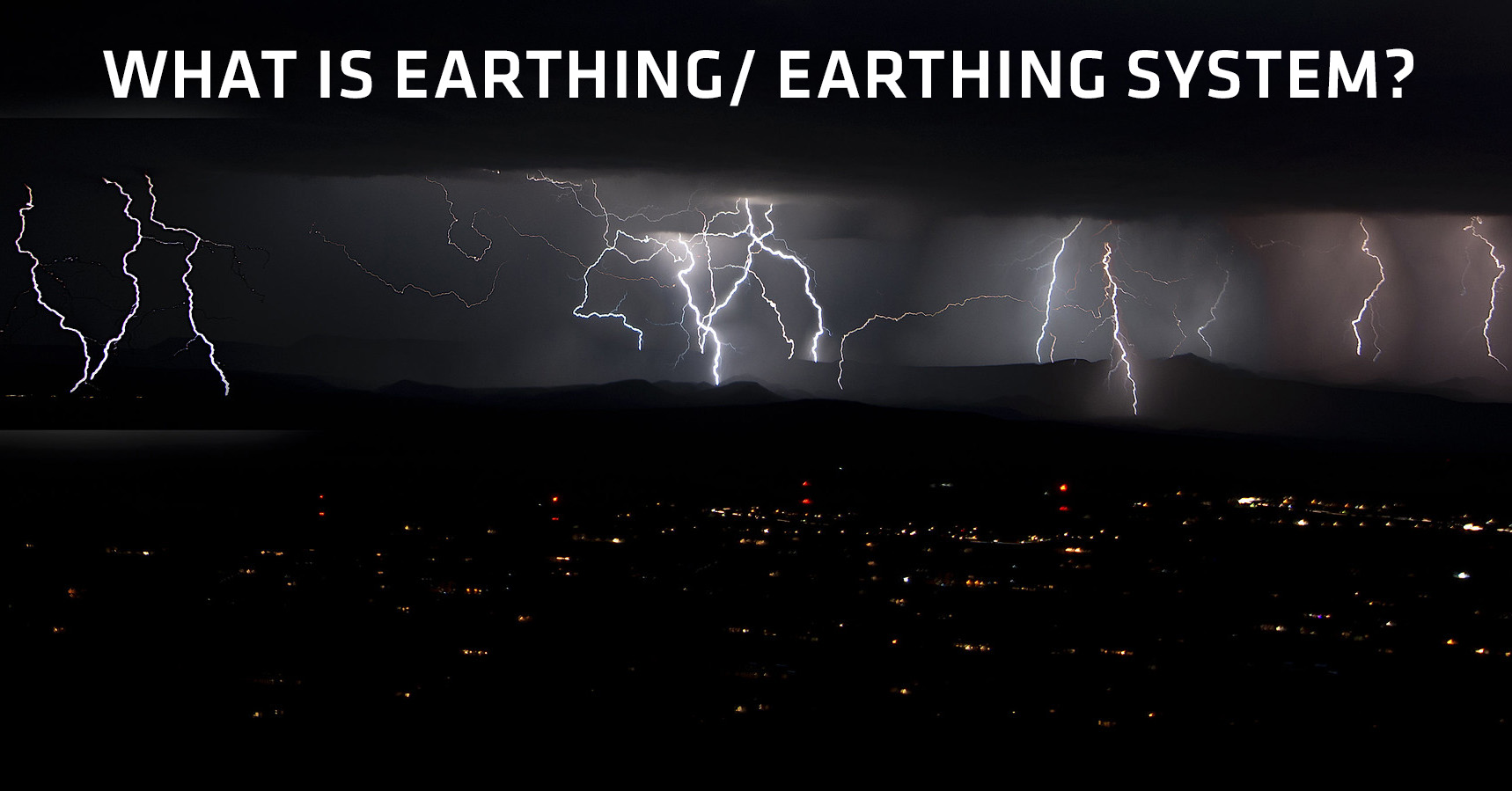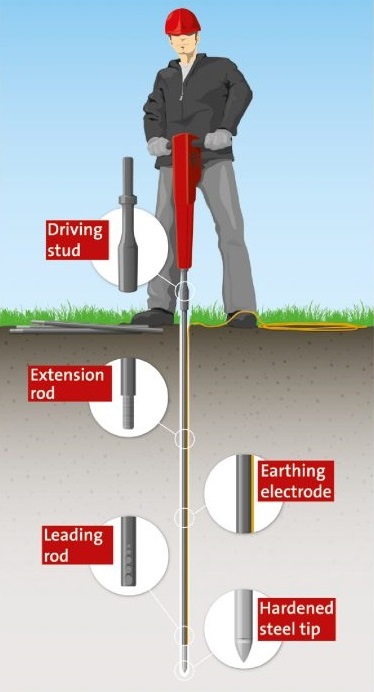What is Earthing / Earthing System?
What is Earthing / Earthing System?
In Electrical Engineering, earth or ground is the reference point in an electrical circuit from which voltages are measured, a common return path for electric current, or a direct physical connection to the earth. In an electrical installation, an earthing system or grounding system connects specific parts of that installation with the Earth’s conductive surface for safety and functional purposes. After explaining what earthing is, this article will focus on the purpose of earthing/grounding, good earthing practices (approved earthing) and the main components, design and functions of an earthing/ grounding system.
Purpose of a Grounding System
 Electrical circuits may be connected to ground (earth) for several reasons. Earthing serves as:
Electrical circuits may be connected to ground (earth) for several reasons. Earthing serves as:
- Personal protection
- Property/ operational protection
- Potential grading earthing
- Electro-magnetic pulses protection
- Lightning protection
In mains-powered equipment, exposed metal parts are connected to ground so that if, due to any fault conditions, a “line” supply voltage connection occurs to any such conductive parts, the current flow will then be such that any protective equipment installed for either overload or “leakage” protection will operate and disconnect the line voltage.
This prevents harm resulting to the user from coming in contact with any such dangerous voltage in a situation where the user may, at the same time, also come in contact with an object at ground/earth potential. Connection to ground also limits the build-up of static electricity when handling flammable products or electrostatic-sensitive devices.
Approved Earthing
A customer that buys power, expects good earthing. This, is in view of the fact that use of electricity with bad earthing includes a high risk. All suppliers of power must have approved earth electrodes at their facilities. It means that flash-over voltages, which can appear for different reasons, are led into the soil so they do not cause any damages and/or injuries.
An approved earthing should include:
- Low electrical resistance
- Ability to conduct stable voltage, even at weather changes
- Long life expectancy, i.e. high resistance against corrosion
Choosing an earthing system can affect the safety and electromagnetic compatibility of the installation. That’s why our recommended choice is the Elpress Deep Earthing System:
Elpress Deep Earthing System
Components of Earthing System
The Elpress Deep Earthing System consists of five parts (components):
- Hardened Steel Tip
- Leading Rod
- Extensions Rods
- Driving Studs or Sleeves
- Earthing Wire (supplied by wholesalers)
Function & Design of Earthing System
Insert the earthing copper wire (5) into and hold by the hardened steel tip (1). The extension rods (3) have guiding pins to enter into the previous tube end to form a stable extension of the system. As the earthing resistance may be continuously monitored at the other end of the wire, the driving down is interrupted when a satisfactory low resistance is reached. You can pull up and re-use the top extension rod (3).
The driving down of the studs (or sleeves) is normally made by Power Hammers with a suitable driving stud (4) or with a sledge hammer and the driving cap FS61 or FS62C.
Why choose Elpress Deep Earthing System?
Some of the numerous benefits of the Elpress Deep Earthing System are:
- No jointing of the earthing electrode or earthing wire
- Accepts large cross section area, 16 – 95 mm2 wire
- Suitable for use with several wire types
- Long life expectancy
- Full control over the Cu wire travel during drill down
- When using Cu wire, the steel rods act as sacrificial anodes and protect the Cu wire against corrosion
- Enables continued resistance monitoring
- Reduction of the potential differences at the earth surface
- The earthing resistance is seasonally- stable
 Very weight effective and the short driving rod segments are easy to handle
Very weight effective and the short driving rod segments are easy to handle- Low cost compared to other systems
- Few parts, making driving uncomplicated and operationally reliable earthing design
Have you read our Complete Guide on Lightning and Lightning Protection Systems?
FREE Technical Advisory Service
E-Tech Components UK Ltd maintains a free technical advisory service.
Contact us for more information or enquiries concerning this and all other products: +44 (0) 1744 762 929

